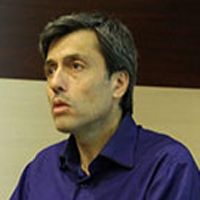The Effect of Endurance Training on Angiostatin and Enos Gene Expression of Cardiac Tissue in Type 2 Diabetic Male Wistar Rats
Author(s):
Article Type:
Research/Original Article (دارای رتبه معتبر)
Abstract:
Background and Aim
The eNOS gene that is responsible for the production of nitric oxide and angiostatin is an inhibitor of angiogenesis. The aim of present study was to investigate the effect of endurance training on angiostatin and eNOS gene expression of cardiac tissue in type 2 diabetic male wistar rats.
Materials and Methods
In an experimental study, 36 male wistar rats were randomly divided into three groups, Diabetic Endurance Training (DET, n=12), Diabetic Control (DC, n=12) and Healthy Control (HC, n=12). Type 2 diabetes was induced by intraperitoneal injection of STZ. The endurance training included 10 weeks, 5 sessions per week running at speed of 27 m/min for 15 minutes in 1st week and reached to 27 m/min for 60 min/day in 9th weeks. The animals were sacrificed 24 h after last training session and the samples were taken from cardiac tissue. The gene expression of angiostatin and eNOS were examined by Real-Time PCR. The one-way ANOVA was used to analysis the data. The significant level was set at p<0.05.
Ethical Considerations
This study was approved in Research Ethics Committee of Arak university of medical sciences with the code IR.ARAKMU.REC.1394.329.
Findings
The gene expression of angiostatin and eNOS of DC group showed significant increase compared to HC group (p =0.000). The endurance training induced significant decrease in the gene expression of angiostatin and eNOS compared to DC group (p =0.000).
Conclusion
It appears that gene expression of angiostatin and eNOS of diabetic cardiac tissue are affected by positive effect of endurance training.Keywords:
Language:
Persian
Published:
Journal of Arak University of Medical Sciences, Volume:21 Issue: 7, 2019
Pages:
112 to 122
https://magiran.com/p1935853
مقالات دیگری از این نویسنده (گان)
-
Comparison of metabolic profiles of elite male karate athletes with different physical fitness levels during different phases of simulated competitions
Masoud Rahnama, Hamid Mohebi *,
Metabolism and Exercise a biannual Jounal, -
The response of corticospinal excitability to different intensities of postactivation potentiation in young trained subjects
Hassan Kosari *, Pezhman Motamedi, , Shahriar Gharibzade, Shapour Jaberzadeh
Journal of practical studies of Biosciences in Sport,



